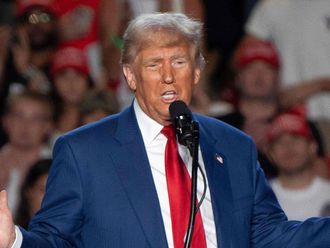
Addressing a conference on Indo-Pacific Security last month at Sydney’s Lowy Institute, Kurt Campbell, Biden administration’s coordinator for the region spoke of the usual American policies of importance of alliances and the centrality of Association of Southeast Asian Nations (ASEAN). Admitting that military partnerships were not enough he barely mentioned geoeconomics as central to interstate relations.
The fact that the US has little economic policy to engage with Southeast Asia, the region that also comprises the ASEAN, is precisely the problem why America is ceding ground to China. Beijing realised much earlier that economic engagement is the foundation of regional stability and durable peace through interdependence.
At $680 billion trade in 2021 China is the biggest trading partner for the ASEAN. The US under Trump, not only withdrew from the Trans-Pacific Partnership but actually declared what amounts to be a “Trade War” against China.
ASEAN largely accepts that the US is a Pacific power, which has enabled security and safety of the sea lanes, allowing them to prosper. But they also know that economic engagement with their neighbour China is the major factor in their phenomenal rise and offers most attractive partnership going forward into their next era of growth. Many states in the region as in others, are therefore, establishing closer relations with China.
World's sixth largest economy
ASEAN is the sixth largest economy in the world. The area is strategically important. The Strait of Malacca and South China Sea are the busiest sea lanes carrying 40 per cent of global trade and a quarter of oil supplies. This explains the growing security sensitivities in the region and why the US is reaching out, seeking partners to contain China’s natural progression.
China and the region are neighbours. With the GDP five times more than the ASEAN’s and five times more expenditure on defence, ASEAN cannot afford to upset China.
Beijing’s emphasis remains on promoting a frameworks for trade and economics. China has joined the Regional Comprehensive Economic Partnership (RCEP), forming one of the biggest trade blocs in the world and has formally applied to join the Comprehensive and Progressive Agreement for Trans-Pacific Partnership (CPTPP), which evolved out of the US-driven Trans-Pacific Partnership negotiations. Trump pulled the US out of this pact.
However, the American presence in the region is significant. Its soft power dominates the region. With thousands of companies operating, the US’s commercial presence remains strong, making US the fourth largest trading partner for ASEAN. FDI of over $330 billion from the US into the region is more than China, Japan and South Korea combined.
Region faces a dilemma
Since the US sees China as a challenge, the region faces a dilemma. The US answer to China’s economic reach in the region has come in the shape of Quad — comprising of the US, Australia, Japan and India followed by AUKUS, an alliance of Australia, UK and the US.
AUKUS, announced in September 2021 will provide Australia with nuclear powered submarines. The American eagerness to back alliances like Quad and AUKUS are a consequence of the growing power imbalance brought about by China’s economic rise.
The Quad and AUKUS have put the ASEAN states, lying at the Centre of the region, in a quandary of sorts. ASEAN has grown on the back of China’s phenomenal rise but America clearly wants ASEAN to partner these new alliances. Partnerships with external powers are likely to dilute ASEAN’s self-proclaimed ‘centrality.’ Forcing a choice, these developments could lead to cracking of the consensual basis on which ASEAN works and also endanger ASEAN’s existence.
The pull of the Chinese economy will nonetheless, remain the strongest draw card in favour of China and weakening of any quasi-military arrangement the US may be able to stitch together. Beijing thus hopes to marginalise the two alliances by sustained multidimensional economic cooperation with the region, which now has a new driver in the shape of China’s Belt and Road Initiative (BRI).
While China is poised to be the world’s top economy by the end of the decade, America will retain its military edge, which may itself become unsustainable in the medium and longer term as far as Asia is concerned. The region therefore, needs a new source of stability and peace — for the benefit of all nations — resting upon economic and trade interdependence.
Sajjad Ashraf served as an adjunct professor at the Lee Kuan Yew School of Public Policy at the National University of Singapore from 2009 to 2017. He was a member of the Pakistan Foreign Service from 1973 to 2008 and has served as ambassador in several countries.








